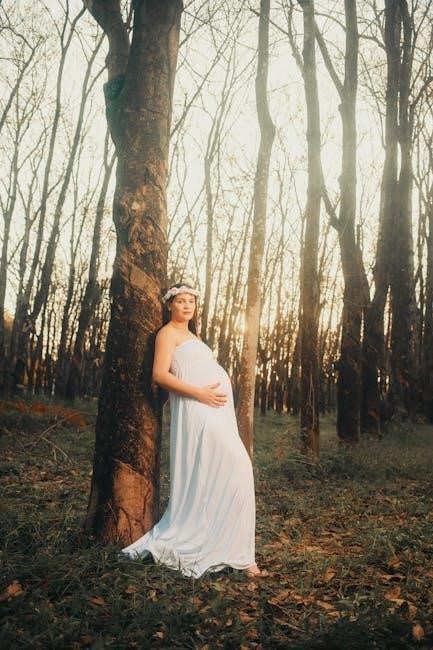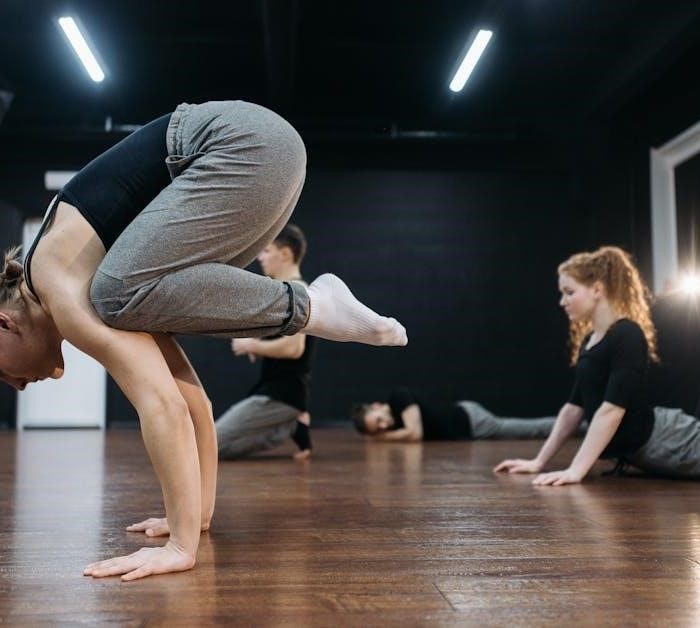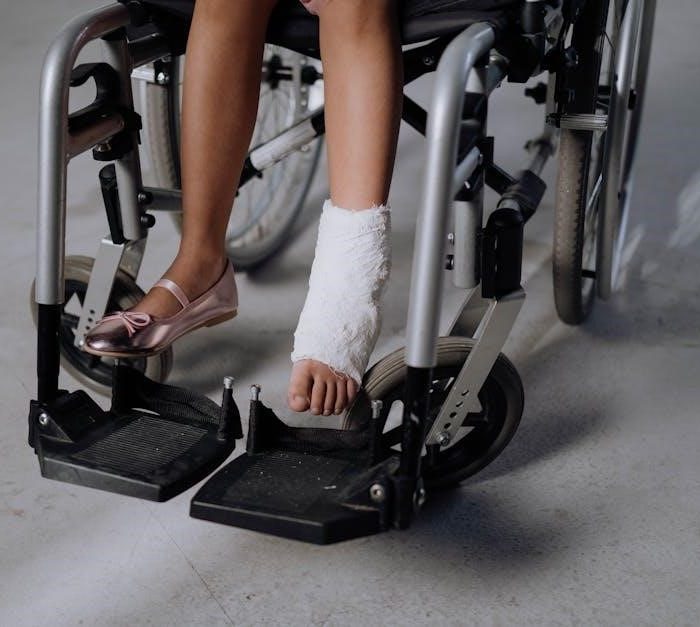Understanding the Love to Dream Dressing Guide
The Love to Dream Dressing Guide offers expert advice on layering baby clothing based on room temperature and TOG values for optimal comfort and safety.
1.1 Overview of the Dressing Guide

The Love to Dream Dressing Guide is a comprehensive resource designed to help parents dress their babies safely and comfortably for sleep. It provides clear, easy-to-follow guidelines based on room temperature and the baby’s individual needs. The guide emphasizes the importance of using appropriate TOG-rated sleepwear, which measures thermal resistance to ensure the baby doesn’t overheat or get too cold. It also covers the best fabrics for different seasons and how to layer clothing effectively. By focusing on safety and comfort, the guide helps parents create an ideal sleep environment for their little ones, promoting better rest and peace of mind.
1.2 Importance of Room Temperature in Dressing
Room temperature plays a critical role in determining how to dress your baby safely and comfortably. The Love to Dream Dressing Guide highlights that maintaining an ideal room temperature ensures your baby’s body regulates heat effectively, preventing overheating or feeling too cold. Overheating is a known risk factor for SIDS (Sudden Infant Death Syndrome), making it essential to align clothing choices with the room’s thermal environment. The guide provides a temperature range and corresponding dressing recommendations, helping parents avoid unnecessary layers and ensure their baby sleeps comfortably. This approach promotes a safe and restful sleep environment, tailored to your baby’s specific needs and the surrounding conditions. By considering room temperature, parents can make informed decisions to keep their baby cozy and secure.

Temperature and TOG Guidelines
Temperature and TOG guidelines help parents dress their babies appropriately for different room conditions. The guide aligns room temperature with TOG ratings to ensure comfort and safety.
2.1 What is a TOG Rating?
A TOG (Thermal Overall Grade) rating measures the warmth of a fabric or garment, indicating how much heat it retains. It helps parents choose appropriate clothing for their baby based on room temperature; The TOG rating ensures that babies are neither too hot nor too cold, promoting safe and comfortable sleep. For example, a 0.2 TOG is suitable for warmer environments, while higher ratings like 2.5 TOG are for colder conditions. Understanding TOG ratings is essential for dressing babies correctly and preventing overheating, which can be a safety hazard.
2.2 How to Use TOG Values for Dressing
Using TOG values for dressing involves matching the garment’s thermal rating to the room temperature. Start by checking the room temperature and selecting sleepwear with a TOG rating that aligns with it. For example, a 0.2 TOG is ideal for warm rooms (75-77°F), while a 2.5 TOG suits colder environments (64-68°F). Layer clothing based on the TOG guide to avoid overheating. Always ensure the baby’s sleepwear fits well and isn’t too tight or loose. Adjust layers as needed to maintain a safe and comfortable body temperature. This approach ensures your baby sleeps safely and comfortably year-round.

Fabric and Material Considerations
Choose breathable, natural fabrics like cotton or bamboo for optimal comfort. These materials regulate body temperature and prevent overheating, ensuring safe and cozy sleep for your baby.
3.1 Best Fabrics for Baby Sleepwear
When selecting fabrics for baby sleepwear, prioritize natural, breathable materials. Cotton is a popular choice due to its softness and ability to regulate body temperature. Bamboo fabric is another excellent option, known for its moisture-wicking properties and eco-friendliness. These fabrics ensure your baby stays comfortable and cool, reducing the risk of overheating. Avoid synthetic materials that can trap heat and irritate sensitive skin. The Love to Dream guide emphasizes the importance of using high-quality, breathable fabrics to promote safe and restful sleep for your baby.
3.2 Seasonal Fabric Choices
Seasonal fabric choices play a crucial role in ensuring your baby’s comfort and safety throughout the year. For warmer months, opt for lightweight, breathable fabrics like cotton that allow proper airflow and moisture absorption, preventing overheating. In cooler seasons, choose slightly heavier fabrics that still maintain breathability, such as bamboo, which wicks away moisture and regulates body temperature effectively. Selecting the right fabric for each season helps maintain a stable body temperature, promoting safe and restful sleep for your baby.

Safety Tips for Dressing Your Baby
For summer, choose lightweight, breathable fabrics like organic cotton or bamboo for optimal airflow. In winter, opt for soft, insulating materials such as merino wool that retain warmth without overheating. Ensure fabrics are moisture-wicking to keep your baby dry and comfortable year-round. Always prioritize natural, hypoallergenic materials suitable for sensitive skin. Breathable fabrics help regulate body temperature, promoting safe sleep and comfort across all seasons.
4.1 Safe Sleepwear Practices
Ensure your baby’s sleepwear fits snugly to avoid loose fabric that could pose a suffocation risk. Opt for tight-fitting garments without hoods or ties. Avoid using loose blankets or soft bedding, which can increase the risk of SIDS. Choose sleepwear made from breathable, natural fabrics that wick moisture away, keeping your baby cool and dry. Always check for certifications ensuring the fabric meets safety standards. Avoid over-dressing, as this can lead to overheating. Use the Love to Dream Dressing Guide to determine appropriate layers based on room temperature and TOG ratings. Prioritize simplicity in design, avoiding any small embellishments or accessories that could detach and become hazards. Ensure sleep sacks or swaddles are designed specifically for sleep safety, with secure openings for baby’s arms if needed. Regularly inspect clothing for wear and tear to ensure safety and comfort. By following these practices, you create a safer sleep environment for your baby, aligning with expert recommendations and reducing potential risks associated with improper dressing. Always consult the guide for specific advice tailored to your baby’s needs and the current season, ensuring you’re using the most up-to-date and relevant information to keep your baby safe and comfortable throughout the year.
4.2 Avoiding Hazards in Baby Clothing

When dressing your baby, it’s crucial to avoid clothing with potential hazards. Ensure sleepwear doesn’t have loose threads, small buttons, or detachable accessories that could pose a choking risk. Avoid tight clothing that may restrict movement or circulation. Opt for garments with secure closures, like zippers, instead of buttons or ties. Steer clear of fabrics treated with chemicals or dyes that could irritate sensitive skin. Avoid clothing with hood strings or cords, as they can be strangulation hazards. Always check for recalls on baby clothing and ensure items meet current safety standards. By choosing simple, functional designs and breathable fabrics, you minimize risks and create a safer environment for your baby. Regularly inspect clothing for wear and tear to ensure ongoing safety.

Transitioning from Swaddles to Sleepwear
Transitioning from swaddles to sleepwear is a significant milestone. Use age and weight guidelines to determine readiness. Ensure sleepwear is fitted for safety and comfort.

5.1 Signs Your Baby is Ready to Transition
Identifying when your baby is ready to transition from swaddles to sleepwear involves observing key developmental signs. One major indicator is when your baby consistently shows the ability to roll over independently, which typically happens around 4-6 months. Another sign is when your baby begins to move their arms freely while swaddled, suggesting they no longer need the constraints of a swaddle. Additionally, if your baby consistently unwraps themselves from their swaddle, it may be time to consider transitioning to sleepwear. Finally, if your baby is developmentally ready to sleep with their arms unrestricted, it’s a clear signal to make the switch. Always ensure the transition aligns with your baby’s individual growth and safety needs.

5.2 Choosing the Right Sleepwear for the Transition

When transitioning from swaddles to sleepwear, selecting the right garments is crucial for your baby’s comfort and safety. Opt for sleepwear made from breathable, natural fabrics like cotton or bamboo, which regulate body temperature effectively. Consider the TOG rating of the sleepwear to ensure it aligns with your baby’s room temperature. A 1.0 TOG is often recommended for this stage. Look for designs with a zippered closure or easy openings to simplify dressing. Sleepwear with a loose, comfortable fit allows for natural movement, promoting better sleep. Additionally, choose sleepwear without any small parts or embellishments to minimize safety hazards. Transitioning products like the Love to Dream Sleep Suit are designed to ease this process, offering a familiar feel while allowing arm movement; Always monitor your baby’s comfort and adjust as needed;



